| BustedGear.com |
| Shop | Repairs | Manufacturers | Resources | iFAQs | About |
|
|
|||
| VOX Continental | Overview, Tune and Bias | ||
|---|---|---|---|
|
Last Page < |
Page Bottom ∨ |
Next Page > |
|
|
|
|||
|
Here's the JMI VOX Continental TC organ. Outside, it was designed with style in mind, the reverse colored keys inspired by harpsichord spinet pianos. Inside, it was designed to emulate the sound of the popular Hammond organ but in a portable case. For easy access to the engine room, the red cover lifts off. |

|
|---|---|
|
The sweet, Hammond sound relies on pure Fundamental Tones (Flutes or Sine waves). In this photo, the oscilloscope's upper trace is a square-wave tone coming from one of the Continental's twelve divider chains, discussed below. The trace is being picked up by the leftmost test probe. Unconventionally, each of the seventy-three square waves (six octaves plus an extra C) is filtered into a sawtooth shape before going to the key switches. A simple RC (resistor-capacitor) low-pass filter is used to carve out the characteristic shape of a reed or a bowed instrument. The oscilloscope's lower trace shows the sawtooth tone corresponding to the square tone above it. |
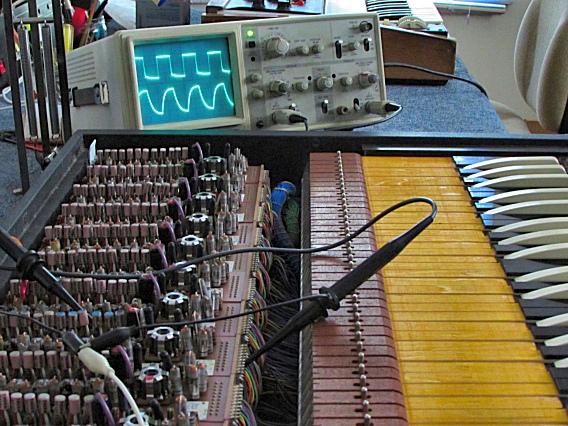
|
|
After the keyboard, a global RC-filter with two capacitors shapes the saw tooth into the more resonant sine shape seen here. This is how the pure Hammond tones are made. And as a bonus you can blend in the reedy, sawtooth tones using a separate drawbar. |

|
|
The Vox Continental has twelve Generator cards, one for each note of the scale. Each generator card has an oscillator with an adjustable tuning coil (right). To tune all the A# notes, for example, find the tuning coil on the generator card marked A#. Use a screwdriver to turn its center slug into or out of the coil. Be very careful when turning the slug. It's made of a soft ferrite that can easily crumble, ruining your ability to tune the card. Use a screwdriver that fits snugly into the slot and never turn it suddenly.
Each oscillator feeds a chain of transistor dividers (flip-flops or multivibrators) that repeatedly divide its output frequency in half. Each split produces a successively lower octave of that note. Each divider chain has a bias trimmer (see photo) that adjusts the baseline current flowing through the transistors in the chain. If the bias is wrong, some divider stages may not work. For example, the three lowest D notes may not sound. Problems with dead notes can often be fixed by adjusting the relevant bias trimmer. |
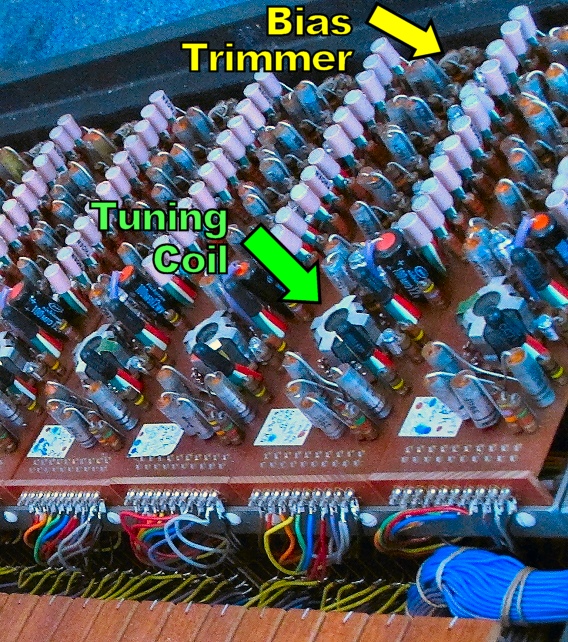
|
|
A dead or intermittent note can also be caused by a poor connection to that note's generator card. Each card has ten, pin contacts that plug into ten, socket contacts to which are soldered ten, interconnect wires (right). Problems can occur from dirt or oxidation on the contacts, from a socket contact that's stretched out of shape, or from a loose or broken solder connection. To clean the contacts, first remove one screw holding down the card, then lift and unplug the card. Spray the contacts with a contact cleaner, then plug and unplug the card a few times. Use a needle nose pliers to tighten any loose socket contacts. Re-solder any wire connections that are loose or broken. |
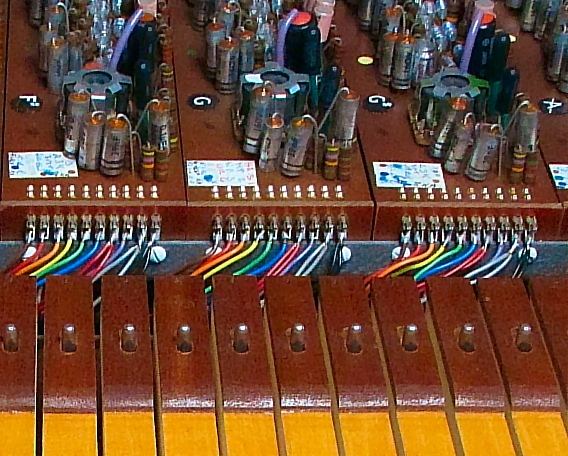
|
|
We trimmed the tuning and bias on several of our Continental's generator cards. We also resoldered a connection to the "C" card causing intermittent outages. Other problems remained, however, so our next task was to lift up the Continental's keybed. Three mounting screws hold it in place. First, remove the screw on the bottom of the organ case (see photo). |

|
|
Then, inside, remove one screw from each end of the keyboard. This photo shows the mounting screw at the low end of the keyboard. |
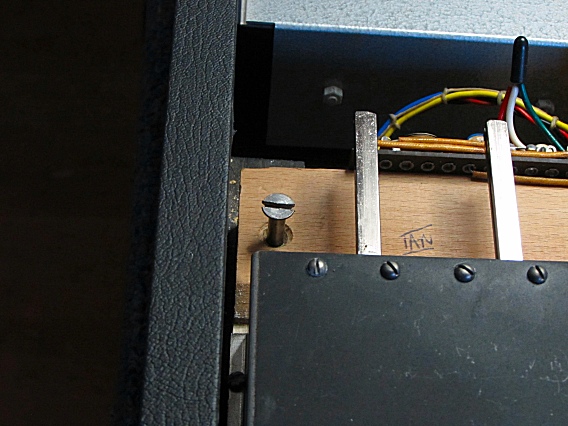
|
|
This photo shows the mounting screw at the high end of the keyboard. |
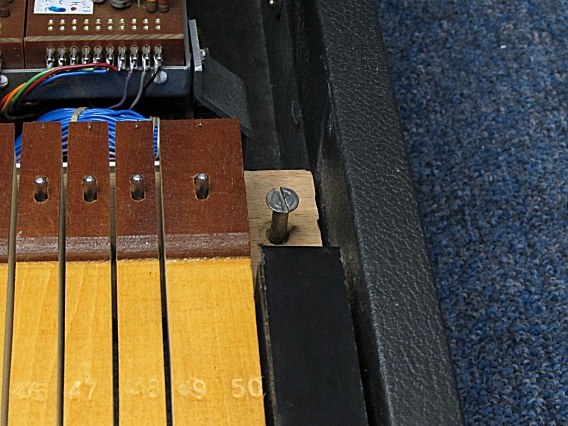
|
| VOX Continental | ||
|---|---|---|
|
Last Page < |
Page Top ∧ |
Next Page > |
|
|
|
|
|
Page design and content Copyright © Richard Diemer - All rights reserved |